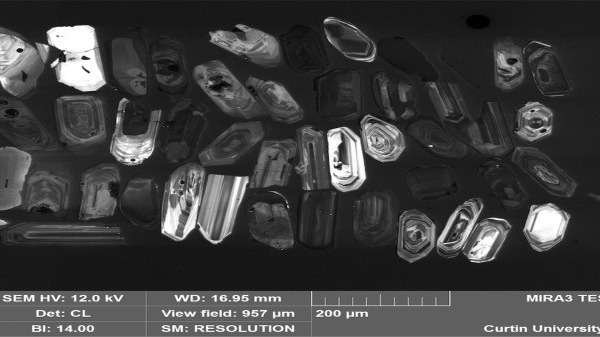Tiny zircon crystals clue to volcanic super-eruptions

Australia could have been home to some of Earth's largest ever volcanic eruptions more than 100 million years ago.
A Curtin University team looking at core samples from the Nullarbor's Madura Shelf found volcanic zircon crystals similar to those found in the volcanic region of eastern Australia that existed more than 100 million years ago.
Curtin University Institute for Geoscience Research geologist Dr Milo Barham led the research and says the super-eruptions that occurred to transport material from the east to the west coast of Australia would have been bigger than anything in recorded history.
"Our work has now shown that there must have been these large volcanic events, these magnitude eight volcanoes that were projecting material thousands of kilometres away," he says.
"It's the first evidence of it occurring here and also some of the oldest evidence of being able to trace and prove one of these cases."
"The one we're suggesting is bigger than anything that's occurred during human history, it's bigger than Krakatoa."
Dr Barham says the zircon crystals would have been transported from a huge eruption column tens of kilometres high coupled with strong polar winds in the troposphere.
"Reconstructions of the climate at the time suggest that we had these winds. Australia was further south back then and we would've been subjected to these polar easterly winds," he says.
"That would've pushed this eruption material all the way across to Western Australia."
He says if an explosion like this happened today, there would be massive devastation.
"You'd be putting out maybe a thousand cubic kilometres of material during the eruption, so nearby it's going to be blanketed in hundreds of metres thick of material."
"You're going to have a shockwave that propagates out and knocks down trees, destroys houses and cities and kills people for hundreds of kilometres."
"Mt St Helen's was on such a small scale relatively. If you scale that up by several orders of magnitude then you can start getting a sense the biggest impact would be the particulate matter that you put up into the atmosphere."
"It would cool the climate by blocking sunlight and basically scattering the suns energy. You'd have several years without a decent summer."
Dr Barham's says the next step is to see if they pinpoint the exact time of the eruptions as well as find more matching volcanic material further west.
Provided by Science Network WA
This article first appeared on ScienceNetwork Western Australia a science news website based at Scitech.



















